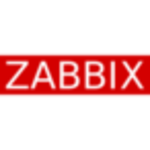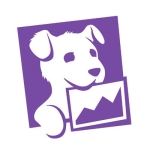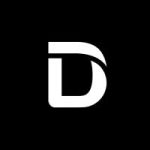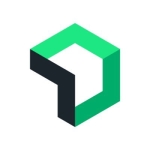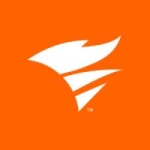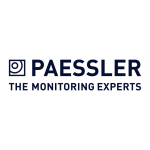What is our primary use case?
We are using it for more visibility on our network devices.
How has it helped my organization?
It did highlight a few things in the very beginning. When we were in the trial, it highlighted some misconfigurations, some of which were quite important to fix immediately. It has brought us to a better place from that perspective. There is comfort in knowing that there is something watching the devices. If a site was to go down, or something was to stop working, or someone plugged in something incorrectly where they shouldn't be, we would be notified, and then we could figure out how to fix it straight away, whereas before, we would be in the dark. We didn't have visibility on that before.
It provides a single integrated platform, which is very important because it saves time and it gets to the point very quickly. If there is something that's not quite right, we can find it and figure out a path to resolution.
It's very good for visualizing the network mapping and topology for our organization. It's really helpful. We do need network diagrams to be accurate and up-to-date for certain accreditations that we have. As we are still in our infancy with the product, with the diagrams that we've got, we do need to do a little bit of work. They are very detailed. They do show the connectivity parts, and once I tighten them up, they'd be sufficient for us to use for our audit purposes. They're good.
The overall intuitiveness of the network visualization is pretty good. They are quite intuitive. It gives you the option to drill down into certain sites and see their connectivity and see what goes where. It's pretty good, especially when you get stuck into the filters and you start adding devices and adding different bits and pieces. It works well.
We've got various sites across the country. We aren't global, but in the UK, we've got various sites. It's very helpful to see the topology and what's going on in our other sites as well, whereas before, we had little to no visibility. This visibility is very important.
It helps keep device inventories up-to-date. It has saved time when it comes to us having audits and interrogations.
What is most valuable?
The alerting has been really useful. The integration with other vendors, not just using their SNMP feature, but the actual integration to other cloud-based solutions is also valuable. We use Cisco Meraki, and integration into that has been very helpful.
It's very important that it's user-friendly and easy to understand. They've got quite a good knowledge base as well. Their resource center is pretty helpful. I had to go there a couple of times.
What needs improvement?
The deployment could be better. It's something that we've done recently. Auvik uses something called a collector, and I added a collector to our main site. I only added it to the main site, but when it came to adding additional sites because this was in the testing phase, I had to reconfigure that collector. It wasn't overly clear about how to do that and how to share. They call it sharing a collector. I had to mess around a bit to reconfigure that collector and add some new sites. I originally set Auvik up as a single site and put the credentials. We share the credentials across the other sites as well. I did the credentials onto our headquarters, and then I realized that I could have added the credentials at the very top level or the organizational level. I had to do a bit of reconfiguring to move the credentials over, and then it scanned the device again to make sure they were the right credentials. So, reconfiguring was a little bit of a pain. In the initial setup phase, if it was described a bit better that if you use the same credentials, you can put them here instead of at the site level, that would've been quite beneficial. They could also mention that you can set your collector up as a shared collector from the very beginning. It could be that it does that, and I just missed that step. If that's not there, then just the description as to what it could do and how it would benefit, instead of having to retrospectively change it, would be useful.
There should be a slightly clearer understanding of how devices are charged. We integrated the Meraki system, and certain devices are chargeable and certain devices aren't chargeable. It would be quite useful to have some kind of message saying, "Right, we've discovered these devices on Meraki. Once you are monitoring them, you will be charged this per device, and there'll be an uplift of your billing every month."
For how long have I used the solution?
I have been using Auvik for a couple of months.
What do I think about the stability of the solution?
Although I haven't taken too much notice of these emails, I have received a fair few in our short period of being with Auvik that describe system outages and maintenance windows and changes. I was a bit surprised at how many I've had, but every time I've wanted to use it, it has been there. It's nice that they email to say that there are potential issues, but there seem to have been a fair few. The downtime hasn't affected us directly, but it potentially has been a fair bit.
What do I think about the scalability of the solution?
It appears to be very scalable. In terms of usage, it spans the whole company's infrastructure. We've got five locations. It spans across all of those and most of the subnets at those locations as well. There are some irrelevant devices that don't need to be monitored there, but we have Cisco switches, and we have Meraki firewalls and wireless access points. We have also got some Polycom and Yealink desk phones that it monitors. It monitors our HP printers, and we've got some Lexmark printers. We monitor those across the sites, and obviously, we've got all of our end-user devices. So, we've got phones, laptops, and a whole mixture of tech that is connected to the end.
We are looking at expanding one of our warehouses to have a lot more infrastructure inside it. Its usage will be expanded. In terms of users, we've only two users who log into the dashboard.
How are customer service and support?
It was pretty good. I only got in touch with them once about the collector we put in. They were pretty helpful. I'm happy to give them a 10 out of 10. They got to the point and helped me out.
How would you rate customer service and support?
Which solution did I use previously and why did I switch?
We used PRTG, but it was decommissioned. It was only a free version.
How was the initial setup?
The initial setup was straightforward to add the single site, but when I wanted to change that collector to point at multiple sites and move the configuration of the credentials over to the top level, that was a bit of an arduous task.
We implemented Auvik out of the box. It took about an hour after the collector was implemented before our network mapping started to populate. I had to authorize the networks that it was detecting, and it took about an hour.
Overall, the deployment probably spanned over a couple of weeks. If I had dedicated time for it, it probably would've taken only a day or so to add all our sites and get everything as it should be.
In terms of the implementation strategy, there wasn't too much of a strategy because it was a trial that we then continued onward. We didn't really have too much of a strategy devised.
What about the implementation team?
I deployed it myself. For maintenance, there is just our team, which includes me and my colleague. Maintenance is required only when we have changes on our network.
What was our ROI?
Personally, I have seen an ROI, but I am not sure if the decision holders who deal with spending money have seen that yet because it has not highlighted any issues. It has not had that value in their eyes. It will probably show its value when it highlights what's gone wrong and how quickly it could be repaired due to the information that it provides.
In terms of time savings as compared to our previous platform, the platforms that we used in the past were decommissioned. We were looking at finding alternatives, which is when Auvik came around. I'm not so sure it has had a chance to save too much time just yet because it has not highlighted anything that needs to be repaired. I can imagine it being a great time saver should something go wrong, but because we are only in our early stages of use, we've not been able to benefit from its fault finding so much just yet.
We have not yet seen a reduction in our mean time to resolution (MTTR) because we've not had any problems.
What's my experience with pricing, setup cost, and licensing?
Auvik has got quite a unique pricing model where you can spin up and spin down devices monthly. Obviously, there's the option to have a yearly commitment, but you can add different tiers of monitoring on devices. There are lots of bolt-ons and bits and pieces that you can choose to have. You can slim it down to something very cheap every month, or you can spin it up to whatever the requirements are, whereas others are a bit more finicky to set up and understand the billing.
The pricing could be tiered so that you get a discount for more devices. We're fairly early on in the billing process, but it could be slightly cheaper.
When we first signed up, it wasn't overly clear in terms of the devices that were chargeable. They seemed to be on the performance plan for some reason, as opposed to essentials, which had a higher tier of cost. So, I had it switched down to essentials. We use Meraki, and we also use another product called Cisco Umbrella. So, there are some aspects that we already have in other products that are a bit more detailed. I don't need additional functions, such as NetFlow, because we got Meraki Firewall, and we use Cisco Umbrella and all of their devices. We've already got the visibility that Auvik has, and we didn't need that portion of the billing. So, it cost a bit more initially because we were on this performance plan.
Which other solutions did I evaluate?
We did look into other products, but we didn't do a trial of them. I can't remember the name, but there were a few open-source products that we were considering for which we would have needed servers and other bits and pieces. Auvik being cloud-based was very appealing because we are very cloud-first. We did the test, and we liked it. So, we decided to carry on.
What other advice do I have?
I would advise giving it the time it deserves to set it up correctly. Make sure that you are not preoccupied with other things. It doesn't take a lot of time, but just make sure that you aren't doing other things, and then you'll get it right the first time.
It's pretty straightforward. It takes a little bit of concentration. It's not something you could just set up in a rush. You would need to make sure that you're doing everything properly and giving it the attention it deserves, which sometimes I struggle to do because I multitask quite a bit.
It hasn't yet helped reduce repetitive, low-priority tasks through automation, but I can see it being able to do that. Similarly, its automation hasn't yet had an effect on our IT team's availability.
Comparing Auvik’s cloud-based solution versus on-prem network monitoring solutions, I personally don't see any downside to it being in the cloud as opposed to being on-prem. It has security for logging in, and it's normally always available. It's easy to spin up collectors that will talk out to the cloud. You still have a small on-prem application, but the whole infrastructure, the system, and the database are all living in the cloud, which really helps. Personally, I find it brilliant. It's great having a cloud-based solution that is powerful, like this one.
I would rate it an eight out of ten.
Which deployment model are you using for this solution?
Public Cloud
Disclosure: PeerSpot contacted the reviewer to collect the review and to validate authenticity. The reviewer was referred by the vendor, but the review is not subject to editing or approval by the vendor.






